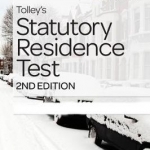Tolley's Statutory Residence Test
BookThis item doesn’t have any media yet
2017 | Law
Tolley's Statutory Residence Test details the new test, identify and discuss the areas of technical concern, in particular the inadequate definitions of terms used in the proposed legislation as it currently stands, comment on any HMRC Guidance that is published and provides practical guidance in respect of examples of common situations. The effect of the new test is that a large amount of case law on which advisers have previously relied will now be redundant and concepts employed in other areas of the law will become relevant for the first time. Although the statutory test will make it easier for a person's residence status to be determined, it is not the straightforward test that was originally proposed. The lack of definition of various terms used in the legislation, such as 'common law spouse or civil partner'and 'home', will mean that the legislation will contain many entirely new areas of uncertainty on which practitioners will need guidance. Advisers will need a publication which analyses the meanings of key terms, by reference to statute and case law and considers any relevant Revenue guidance.
The question of where a person resides is not only technically complex but also of great practical importance to the taxpayers concerned. The book will therefore contain many practical examples illustrating the application of technical principles to realistic circumstances. The introductory chapters will provide an overview and the remainder of the book will discuss the practical difficulties and meaning of the terms used in detail. As mentioned above, this will, no doubt, involve a detailed analysis of case law assisting in the definition of terms used.
Related Items:
| Published by | LexisNexis UK |
| Edition | Unknown |
| ISBN | 9780754554097 |
| Language | N/A |
Images And Data Courtesy Of: LexisNexis UK.
This content (including text, images, videos and other media) is published and used in accordance
with Fair Use.
